- Home
- alleyinsider
- 30 Easter eggs you may have missed in 'A Series of Unfortunate Events'
30 Easter eggs you may have missed in 'A Series of Unfortunate Events'
Throughout the series, we see a mysterious insignia that pops up often.

The same symbol is a tattoo on Count Olaf's left ankle, on a spyglass Klaus picks up from his charred home, and in many more locations.
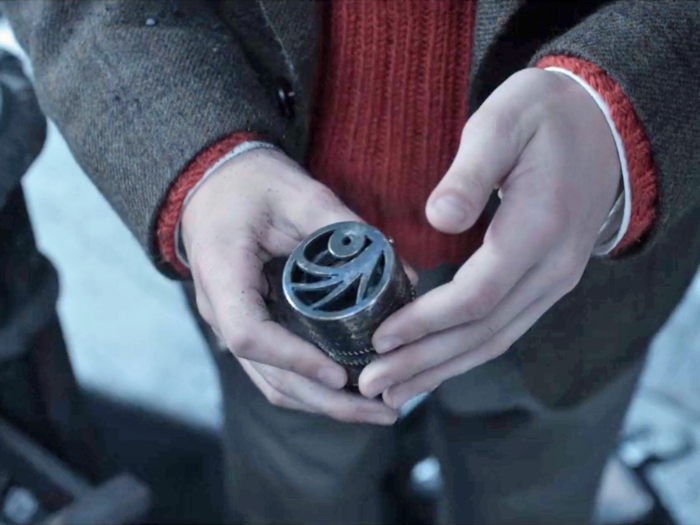
The letters "VFD" are hidden inside it.

"'V.F.D.' stands for 'Volunteer Fire Department.' It's a secret organization that puts out fires, literal and metaphorical, throughout the world that the Baudelaire parents, and many other characters in the show, were a part of.
The organization also has standardized secret codes used throughout the series, many of which are also referred to with V.F.D.-initialed phrases, like "Valley of Four Drafts" and "Veiled Facial Disguises."
Lemony Snicket references the V.F.D. early in the premiere when the Baudelaire orphans learn of the fire that destroyed their home and killed their parents.
"All that my associates and I have been able to learn is that neither the official fire department, nor the Volunteer Fire Department, arrived in time to stop the blaze," Snicket said.
You can read more about the V.F.D. here.
Mr. Poe's sons are named Edgar and Allan. They're a reference to... you guessed it, author Edgar Allan Poe.
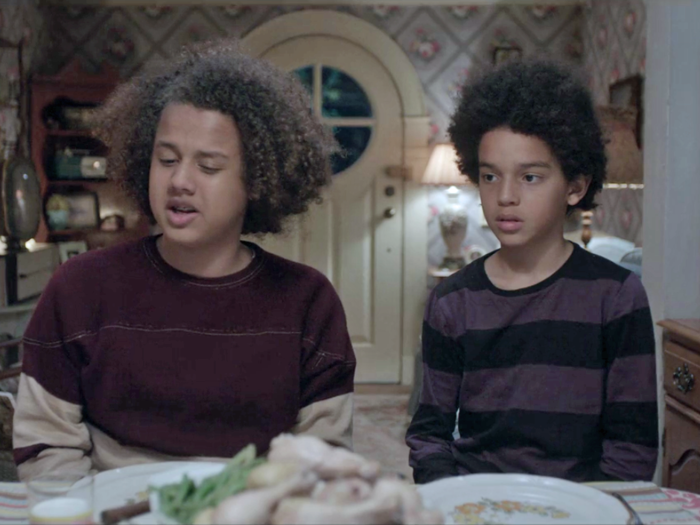
We first see them arguing over whether something is a "crow" or a "raven." "The Raven" is Poe's most famous poem, and crows become an important bird in "The Vile Village," one of the later books in the series.
The slogan of The Daily Punctilio, the city's newspaper, is "All the News in Fits of Print," a parody of the New York Times slogan "All the News That's Fit to Print."
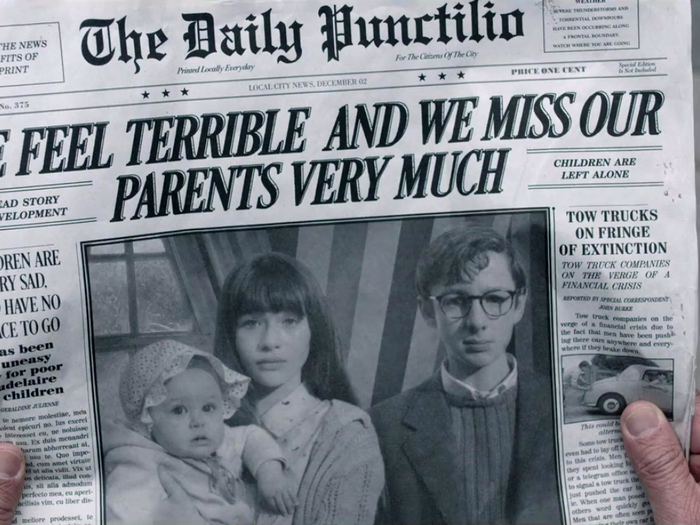
While Snicket narrates from the underground tunnel settings, we see the names of other V.F.D. members and tons of other clues referencing later events in the series.
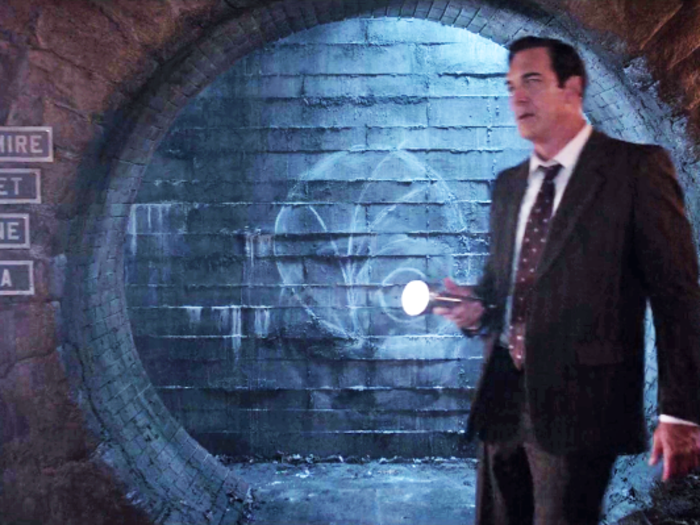
On the left side, there are signs for "Quagmire," "Snicket," Julienne," and "Remora." The Quagmire and Snicket families were both members of the V.F.D. Geraldine Julienne is a reporter for The Daily Punctilio, who often gets details about the Baudelaires' plight wrong in her reports. Mr. Remora was a teacher at Prufrock Preparatory School in "The Austere Academy."
On the right side, there's "Spats." Carmelita Spats is a student at Prufrock whose parents may have been members of V.F.D.
The Cathedral of the Alleged Virgin, though, is just mentioned in passing in "The Hostile Hospital."
Among the names we see flash around him is Montgomery.
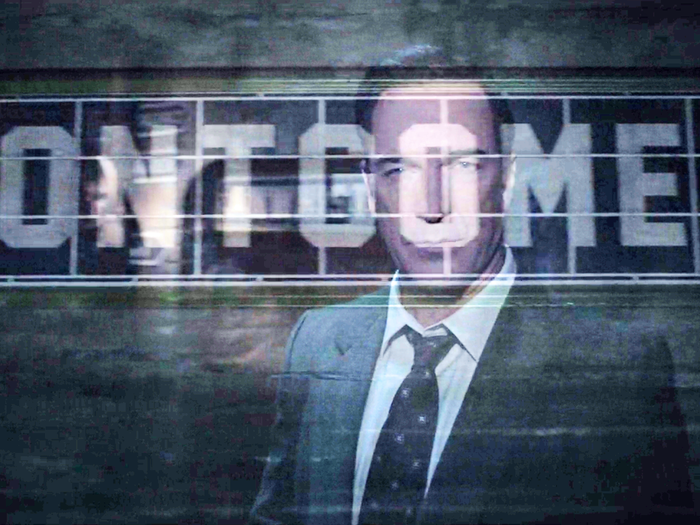
"Montgomery Montgomery" is the name of the Baudelaires' guardians in the next part of the series, "The Reptile Room."
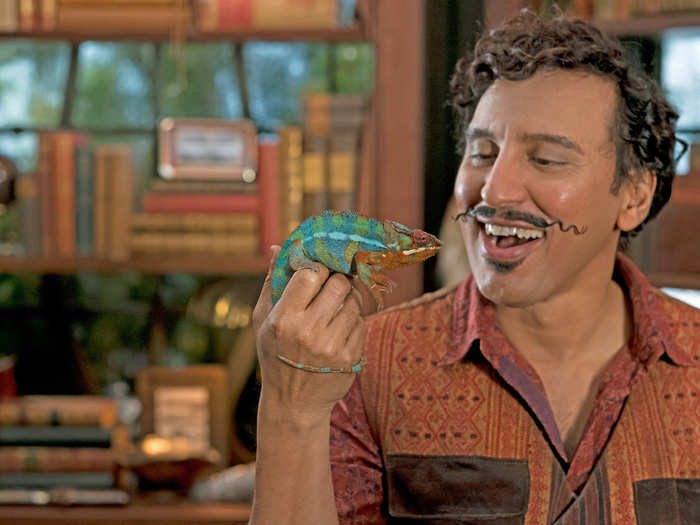
There's also "Anwhistle."
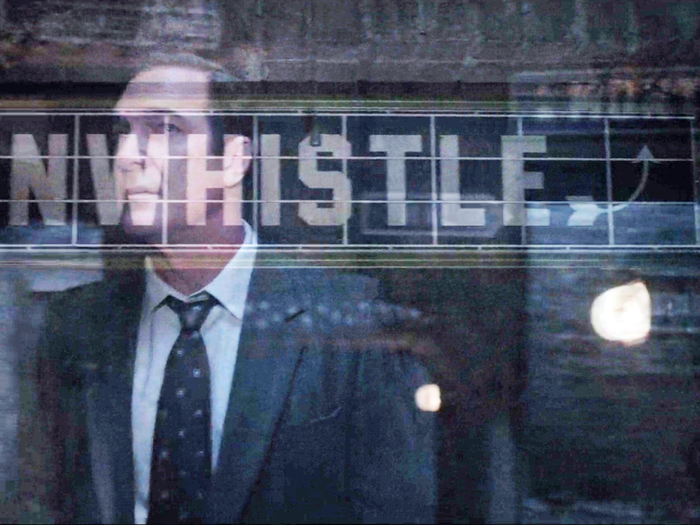
Josephine Anwhistle becomes the Baudelaire guardian in "The Wide Window." She, her husband, and his brother were members of V.F.D.
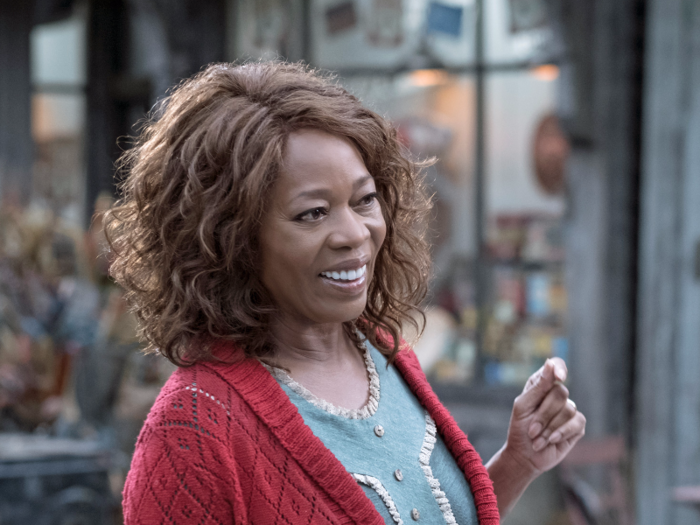
The number 667 refers to 667 Dark Avenue, the site of "The Ersatz Elevator," the sixth novel in the series.
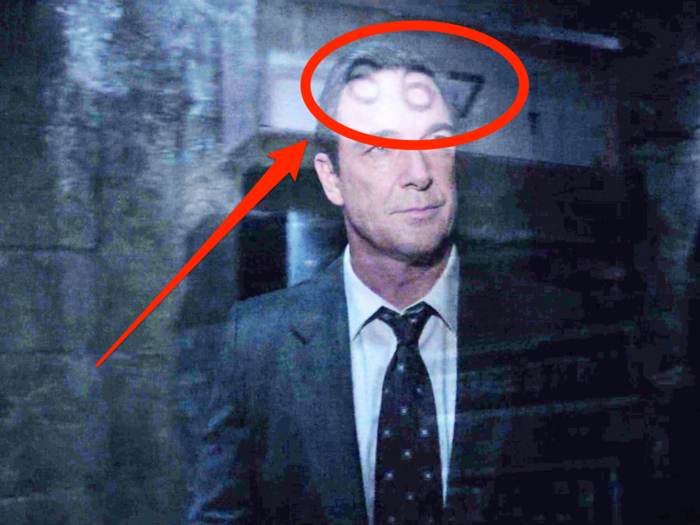
Captain Widdershins is a V.F.D. member and Fernald's father. We'll meet him in "The Grim Grotto," the 11th book in the series.
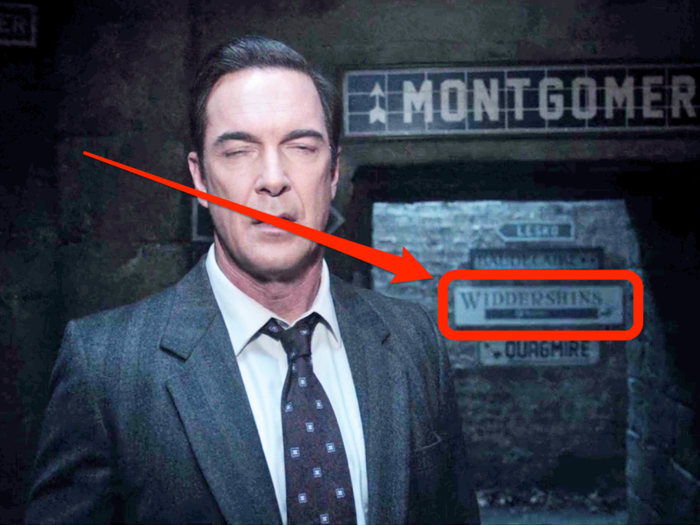
There's also the name "Lesko," a reference to the minor character Mr. Lesko in "The Vile Village."
There's also "Strauss" and "Fernald."
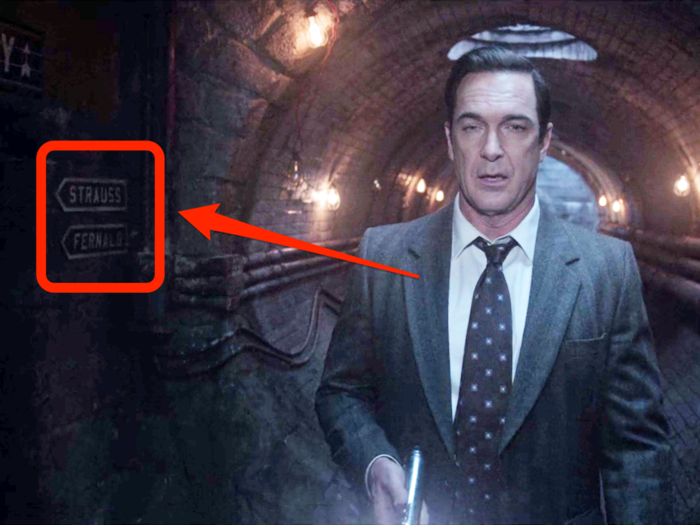
Justice Strauss is Count Olaf's friendly neighbor ...
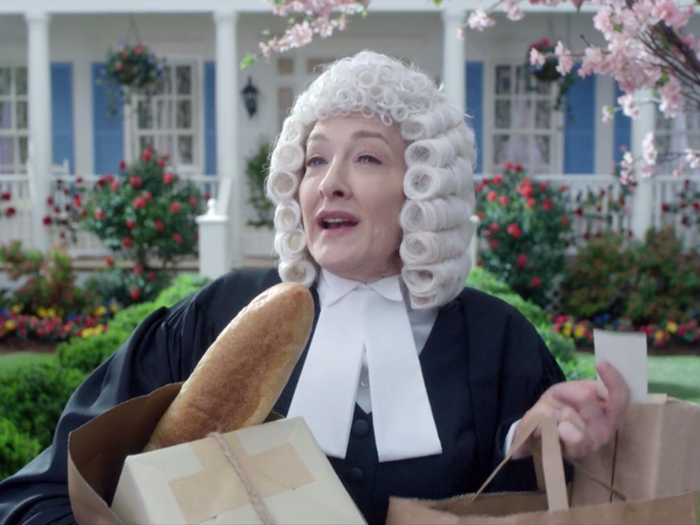
... and Fernald is the real name of the hook-handed man.
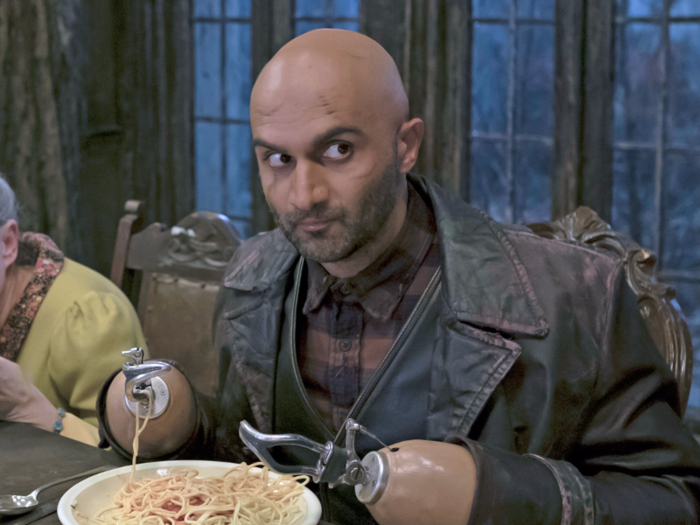
Later on, Strauss brings up "the world's most threatening fungus."
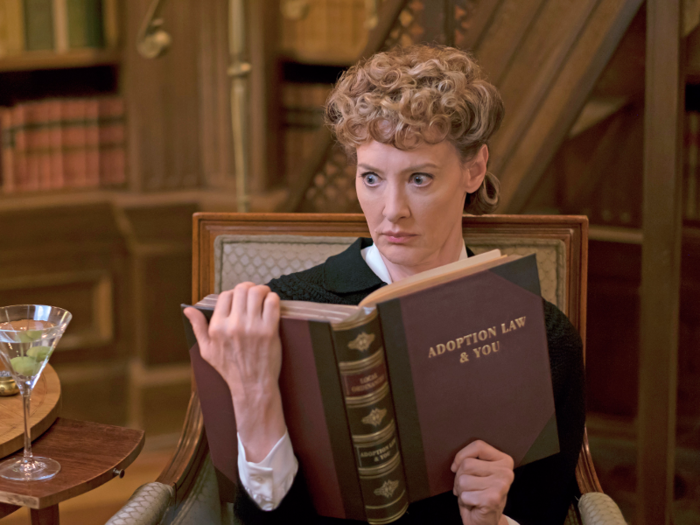
When she's telling the Baudelaires about her library, Justice Strauss tells them "There are sections on everything from Italian cuisine to the world's most threatening fungus."
The fungus is a reference to Medusoid Mycelium, a deadly fungus within the series' universe.
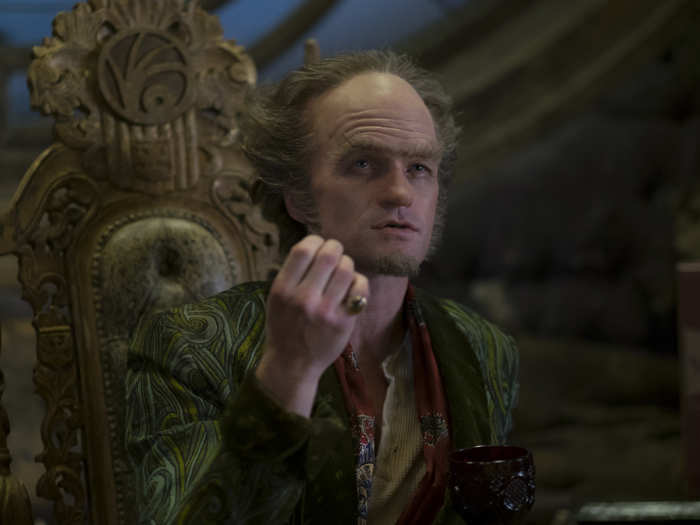
It grows only in enclosed spaces but, if exposed, can kill a person within an hour. Later in the series, Count Olaf uses it as a biological weapon to threaten people.
At one point in episode 2, Olaf wonders aloud about where his sugar bowl went.
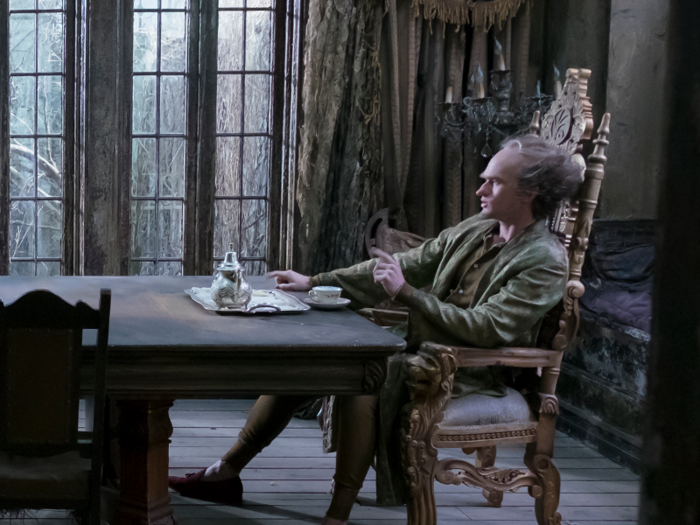
The Sugar Bowl, or the Vessel For Disaccharides, is a MacGuffin device sought by members of V.F.D. It doesn't have a clear purpose, but it seems to have held different things at different times in V.F.D.'s history. At the time of the series, it apparently contained something really powerful or dangerous.
Later in the series, the Baudelaires get caught up in the chase after it, even though they don't know why it's important.
The man with hooks for hands offers Olaf a few choices of cake flavors. One's "a little lemony."
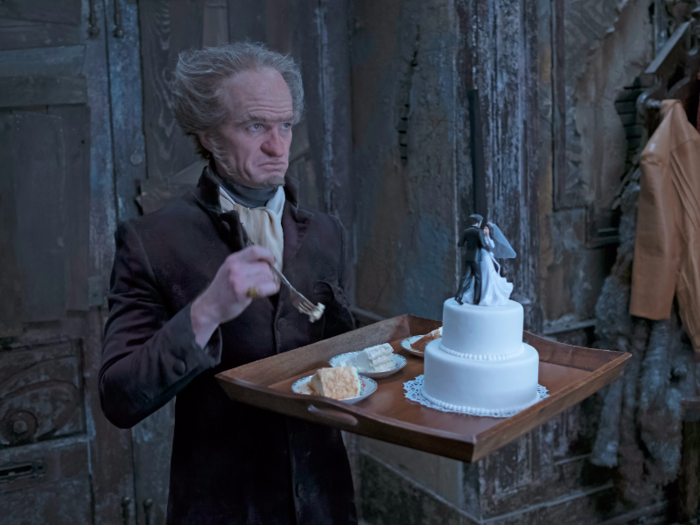
"I told you never to say that word," Olaf responds.
It's a reference to Lemony Snicket, the narrator of the show and a character in the series. He's one of Olaf's rivals.
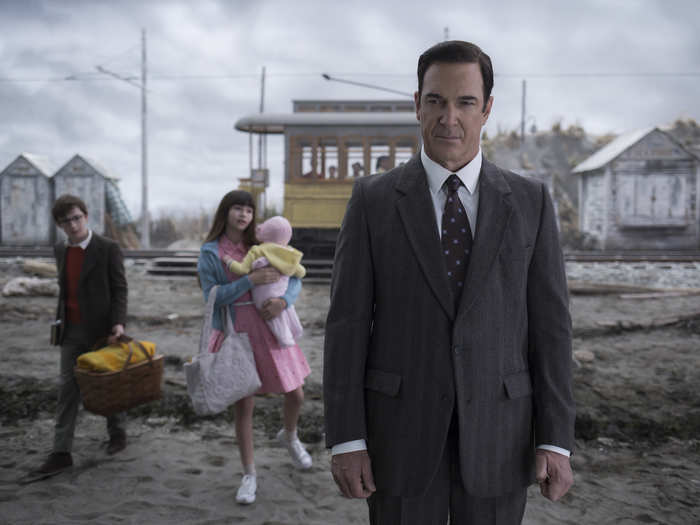
Count Olaf writes his plays under the pseudonym "Al Funcoot."
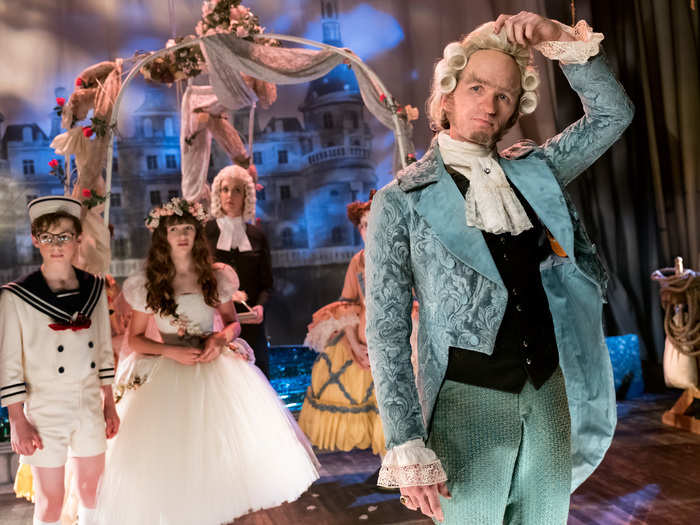
The name is an anagram for "Count Olaf."
When Sunny goes missing, Olaf asks, "When did you see her last?"
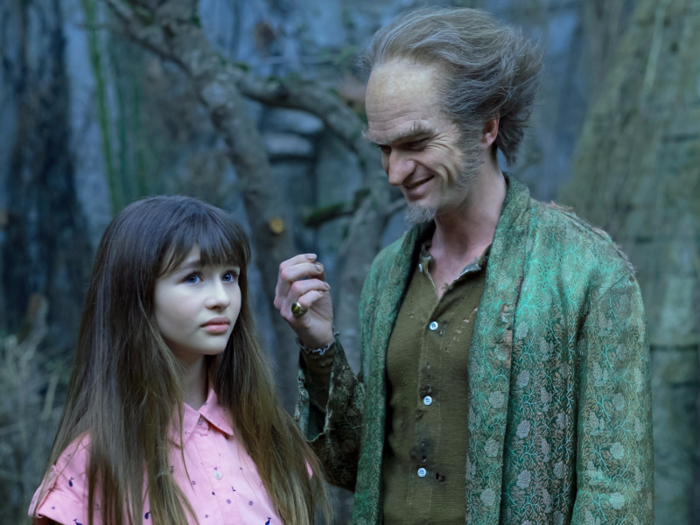
The phrasing recalls one of Handler's books, "When Did You See Her Last?"
He also wrote it under the pen name of Lemony Snicket. It's the first in a set of four books in a series called "All the Wrong Questions," about Snicket as a teenager learning about V.F.D. The phrase "the wrong question" crops up a few times throughout the season.
Before falling into the pond, Gustav says "the world is quiet here."
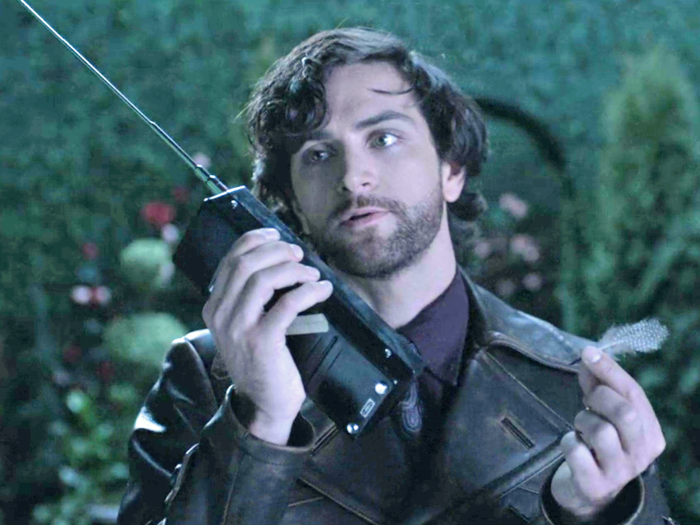
The Baudelaires don't know it yet, but "The world is quiet here" is the V.F.D. motto. It's emblazoned on the doorposts of some of their headquarters.
As the Baudelaires travel through Lousy Lane in episode three, they pass an apple orchard.
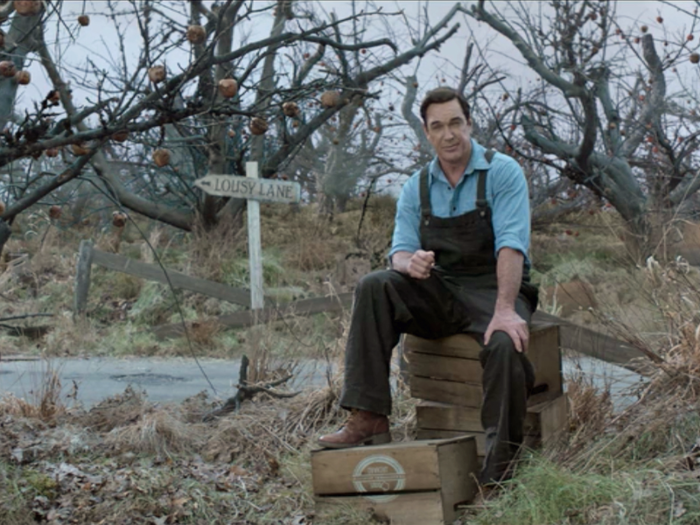
Lousy Lane is the site of an orchard "which once produced apples so sour, one only had to look at them to feel ill," Snicket says. "And it encircles a horseradish factory, so the entire area smells bitter and strong."
Horseradish is the cure to Medusoid Mycelium, the deadly fungus that comes up later in the series. In "The End," the final book in "A Series of Unfortunate Events," there's an apple tree that's crossbred with horseradish — likely just like the ones on Lousy Lane — that fend off the effects of the fungus.
See that thing in the window behind Snicket?
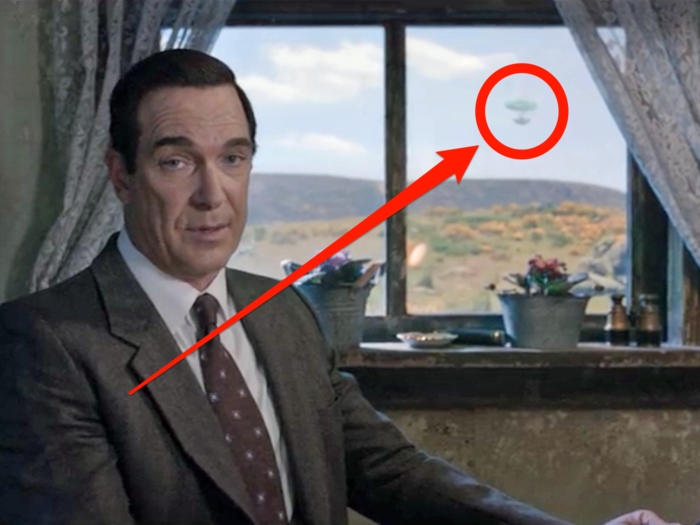
As one Reddit user noted, it's the Self-Sustaining Hot Air Mobile-Home, a vehicle that kind of looks like a bunch of interconnected hot air balloons. It appears in "The Vile Village," the seventh book in the series.
The Baudelaires go to a cinema where "Men in Beige" is playing.
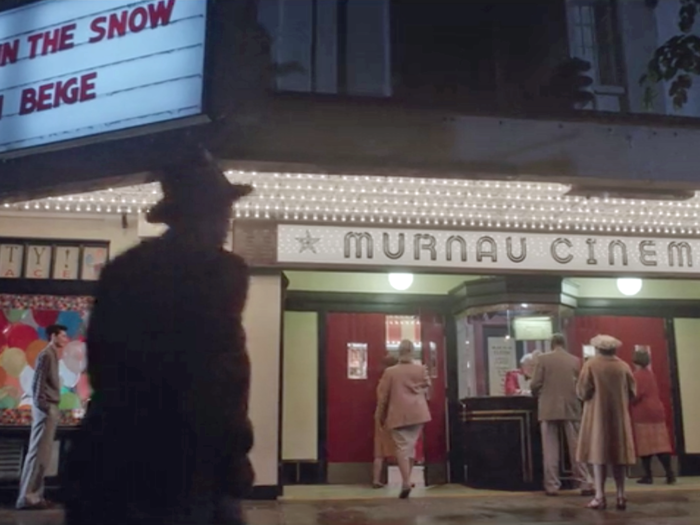
The director and producer of the Netflix series, Barry Sonnenfeld, directed "Men in Black."
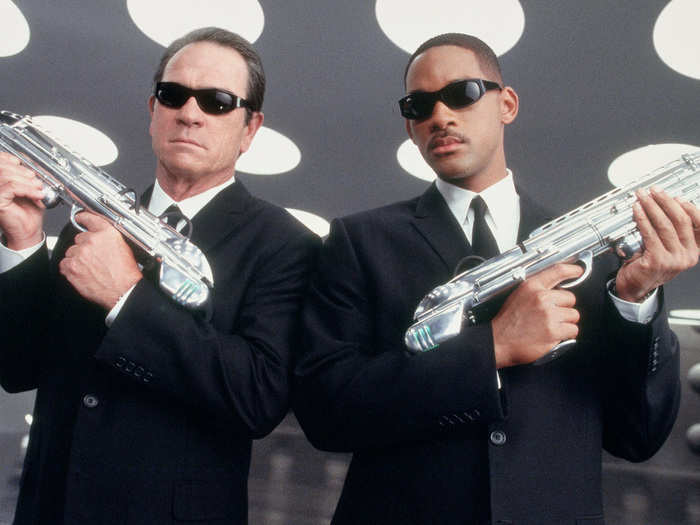
Sonnenfeld was also originally signed on to direct the 2004 movie adaptation of the series.
The name of the movie theater, "Murnau Cinema," is a reference to the German film director F.W. Murnau, who made black-and-white films like the one the Baudelaires watch.
At the movie theater, Olaf expresses frustration with "nickelodeons."
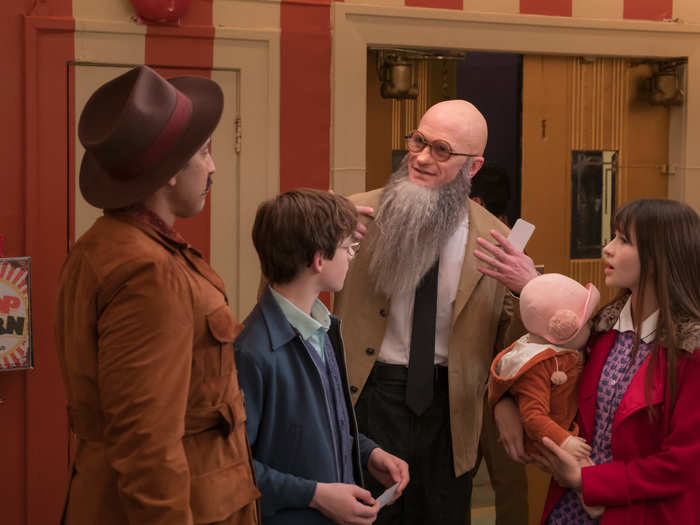
It's a word which means "a movie theater with an admission fee of one nickel." "Nickelodeon" is also the name of the production company that produced the 2004 film "A Series of Unfortunate Events," starring Jim Carrey, and which adapted only the first three books in the series. To the frustration of many fans of the series — and to Sonnenfeld, who couldn't direct the movie — Nickelodeon never adapted any of the other books.
In a skirmish with Count Olaf, Jacqueline brandishes a harpoon gun.
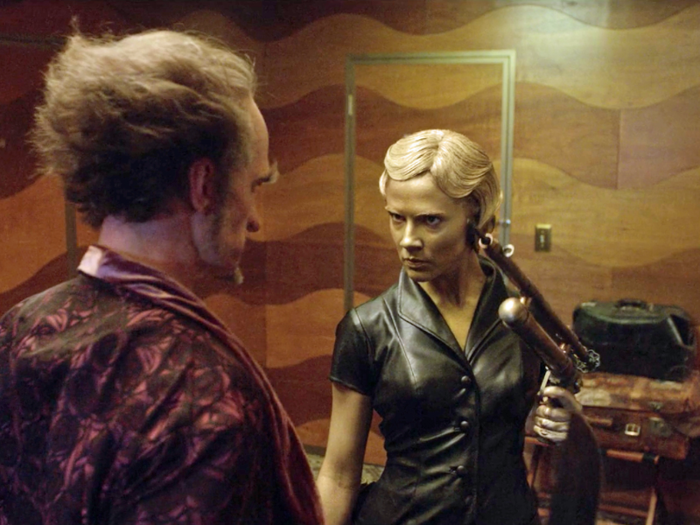
It's a weapon that comes up a few times in the series. Esmé Squalor, Count Olaf's girlfriend, introduces it in "The Vile Village," and the Baudelaires get ahold of it in "The Penultimate Peril."
Near the beginning of "The Wide Window," in the fifth episode, there's a familiar fishmonger.
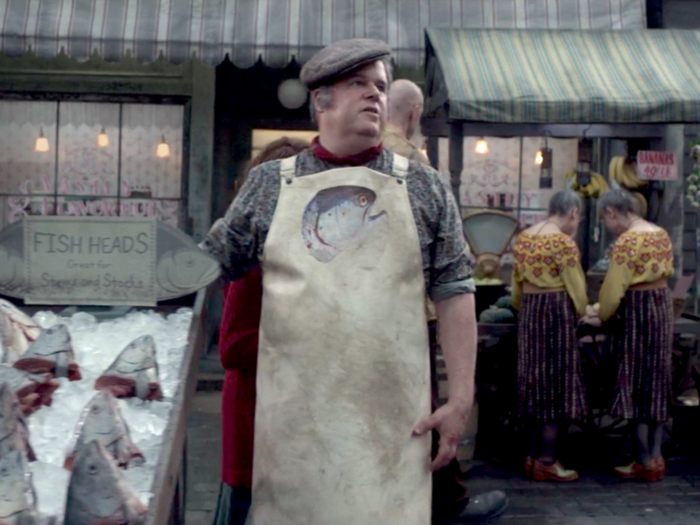
It's Daniel Handler, the author of "A Series of Unfortunate Events" and screenwriter of the adaptation.
Olaf's troupe commands Larry the clown waiter not to write secret messages in "ketchup, mustard, or wasabi mayo" in the food.
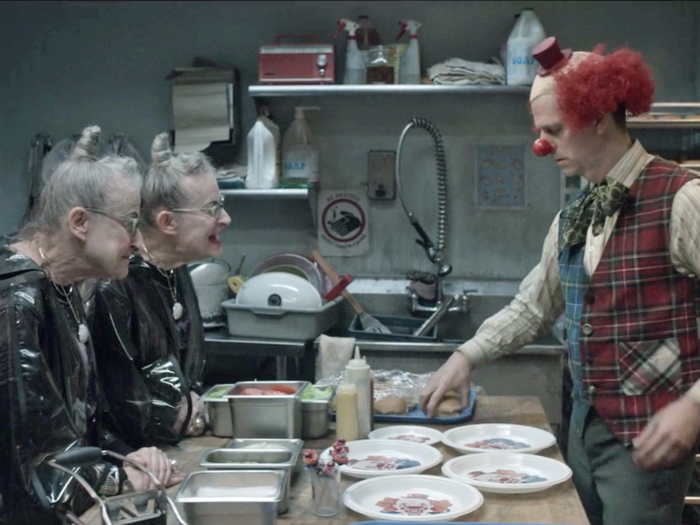
Wasabi, like horseradish, is a cure for Medusoid Mycelium.
The text of "The History of the Lucky Smells Lumbermill" in "The Miserable Mill" is actually just an article from The Daily Punctilio.
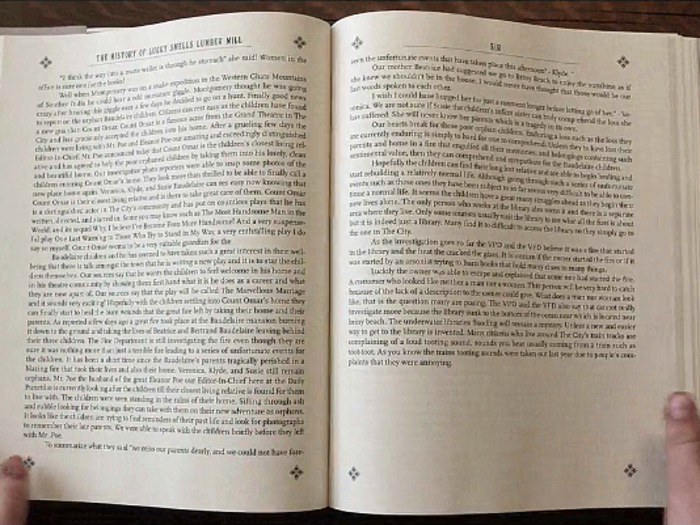
When Violet looks up the history of the mill to see what their parents were doing there years earlier, we catch a glimpse of a few other pages. It looks like the prop team repurposed text from articles in "The Daily Punctilio," the newspaper in the series' universe.
This might not be so much an Easter egg as an incidentally revealing decision by the show's producers. The Daily Punctilio's irresponsible, misleading, and cheerful reporting enables society to allow the Baudelaires to suffer. Here, already, are some telltale errors. Count Olaf is mistakenly referred to as "Count Omar," and the reporter is smitten with Olaf's ego.
Some of the other text also seems to be from Uncle Monty's journal, and from the original books themselves.
The table of contents in the book, however, is a bunch of lumbermill puns.
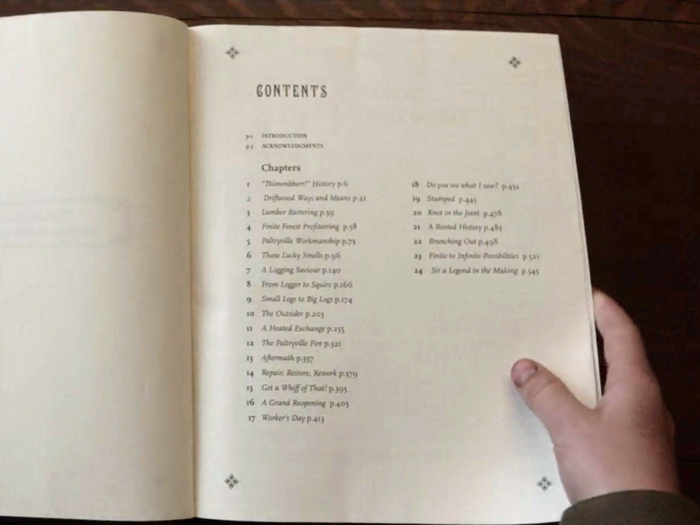
Chapter titles include "Driftwood ways and means," "Do you see what I saw?," "Stumped," "A rooted history," and "Branching out."
A Daily Punctilio article pinned to Snicket's wall is written by Bo Welch.
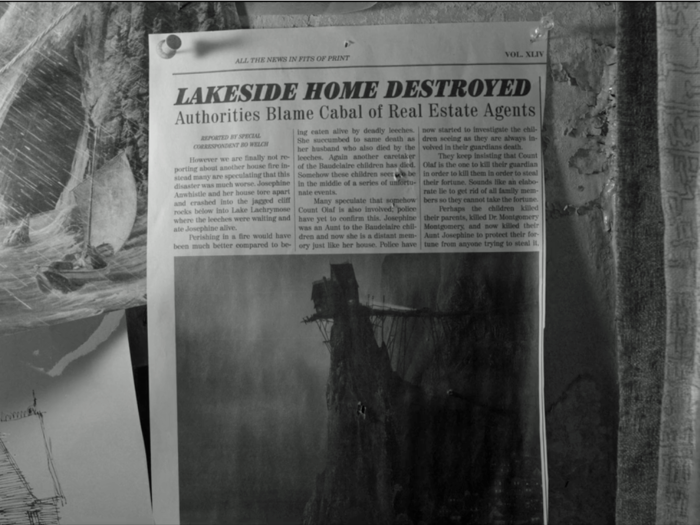
In another article, we get more information about "Beatrice."
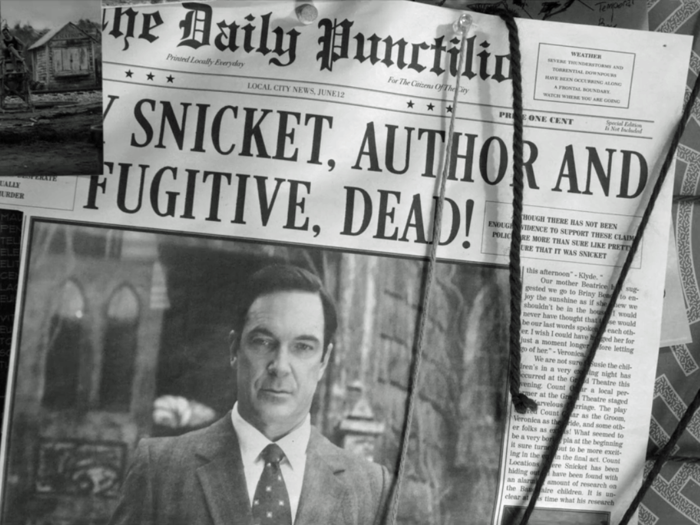
"Beatrice" is a name that pops up over and over again throughout the series. It's the name of the Baudelaire orphans' mother, as well as a former love interest for Snicket and Count Olaf.
In the Daily Punctilio story, "Veronica" is quoted as calling Beatrice her mother, an early hit about the reveal to come in a later season. The Punctilio often gets the Baudelaires' names wrong, so we can safely assume it's Violet being quoted here.
As Snicket explains the concept of hypnosis to viewers, he gives the example of "a man, who upon hearing the word 'Nero,' could play an instrument he never studied."
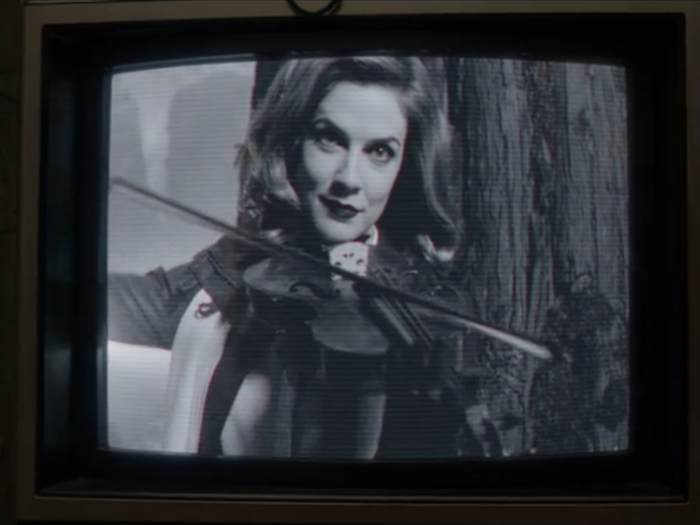
The television screen across from him then shows Jacqueline playing the violin.
It's a reference to Nero, the Roman emperor who, based on a false legend, played the fiddle while Rome burned around him.
Vice Principal Nero is also the person who runs Prufrock Preparatory School, which the Baudelaires attend in "The Austere Academy."
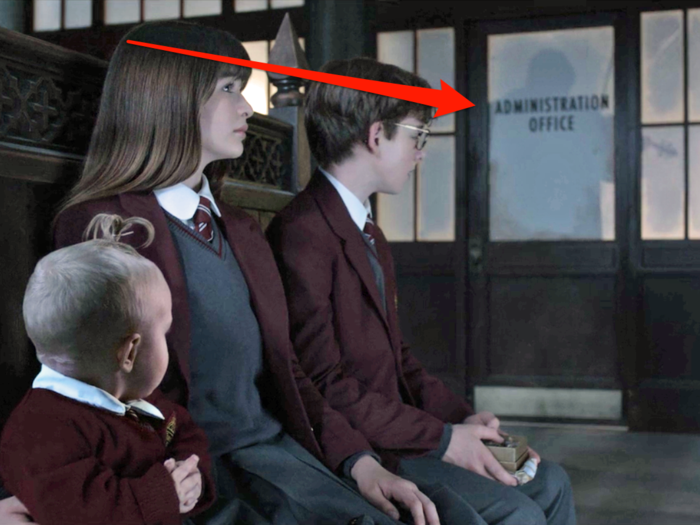
In the book, he plays the violin daily and incompetently. We get a glimpse of him at the end of the last episode in the season.
We see an elaborately hatted woman shoot a laser into the Quagmire mansion, starting a fire.
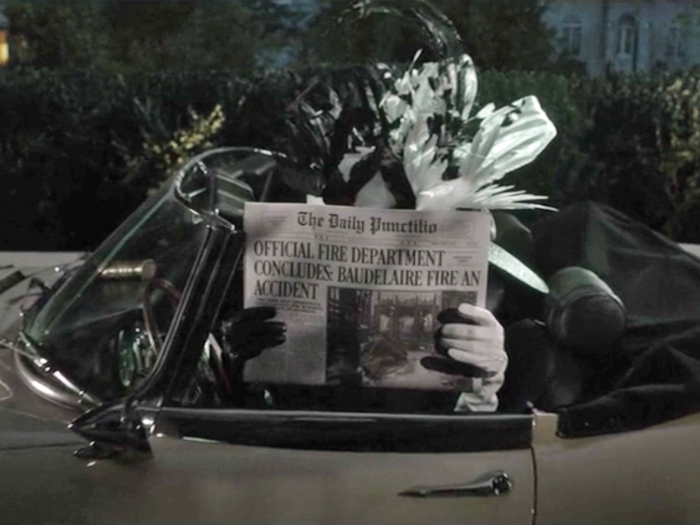
It's probably Esmé Squalor, who we formally meet in "The Ersatz Elevator," the sixth novel in the series. She's obsessed with high fashion, and later takes in the Baudelaire orphans because orphans are "in."
Snicket briefly shows us a letter before packing it in his suitcase.
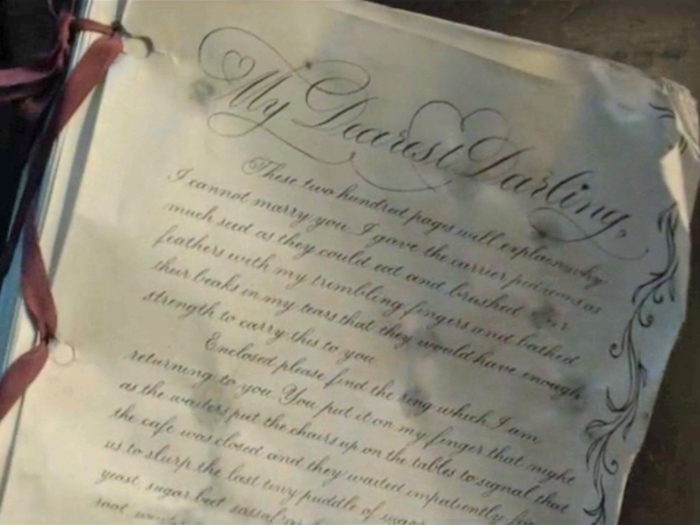
"My dearest darling," it reads on the top. "These two hundred pages will explain why I cannot marry you."
The pages seem to be a letter from Beatrice to Snicket, rejecting him after he proposed before the events of the series. We'll hopefully learn more about her in the next season.
Popular Right Now
Advertisement